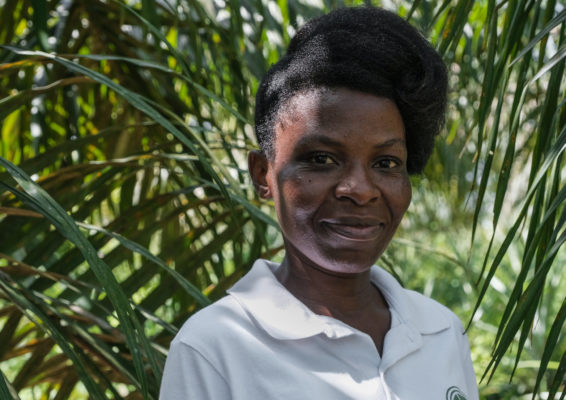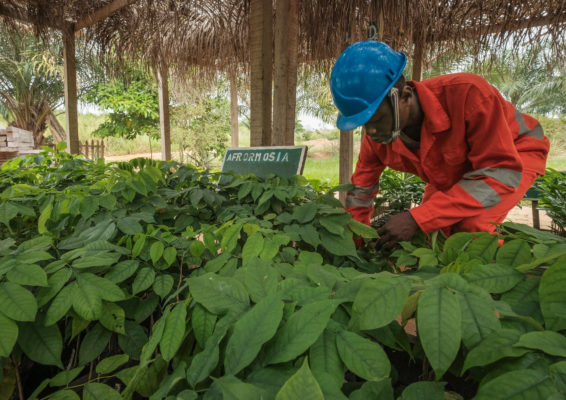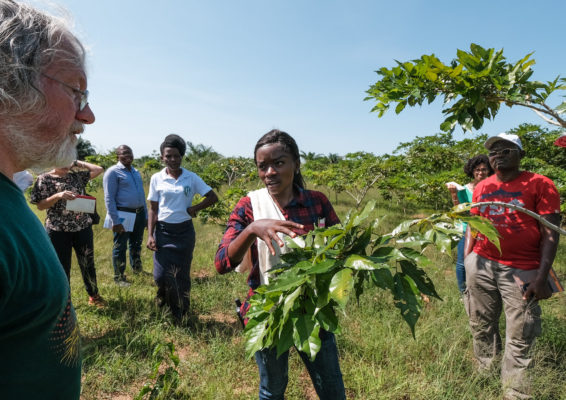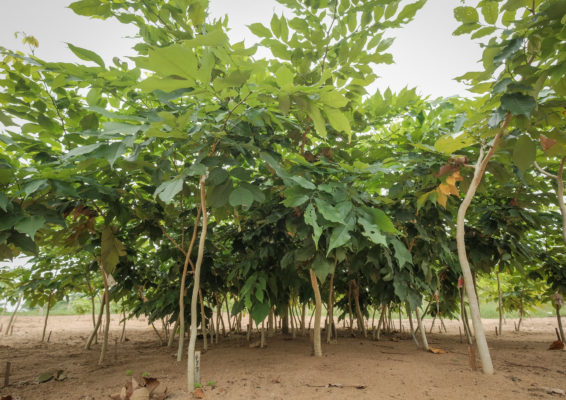Located on the bumpy road connecting run-down Bangoka International Airport to the city of Kisangani in Democratic Republic of Congo (DRC), Compagnie Forestière et de Transformation’s (CFT) sawmill stands as an oasis of change.
A visit inside the streamlined structure reveals a timber company taking positive steps towards sustainability. In a context where poor governance is the norm, a responsible private sector could be the much-needed game-changer for forest management in this central African country.
I accompany a small group of visiting scientists from the Center for International Forestry Research (CIFOR) and the Royal Museum for Central Africa (RMCA), who are checking-in on the fruits of their collaboration with CFT.
Our guide is Cécile Lubwilu Lolo, a knowledgeable Congolese woman leading CFT’s forest management unit. To our right, cold drinking water is available for employees. To the left, signposts in French, Swahili and Lingala explain the safety rules for visitors. As we tour the sawmill, we see fully equipped men and women, producing perfectly cut wooden planks – a rare sight in a country who still largely exports unprocessed logs.
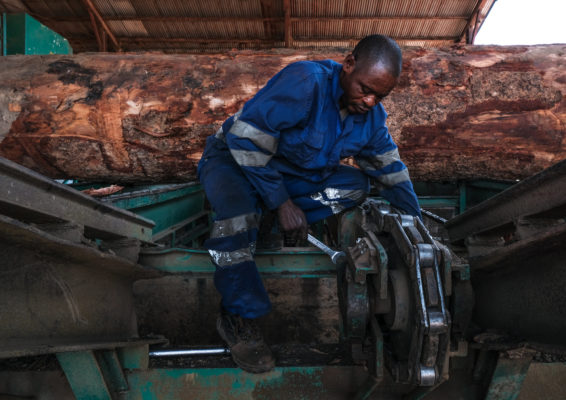
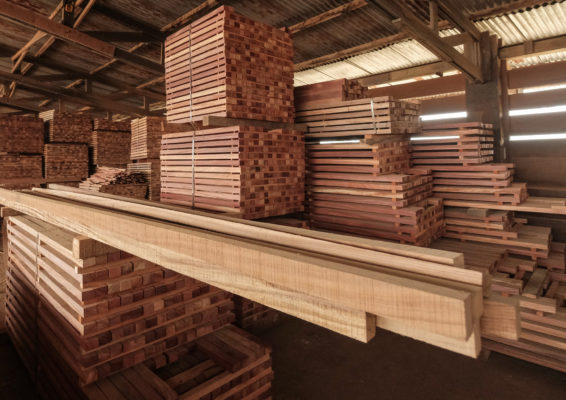
CFT is one of the first logging companies in DRC to engage in a long-term sustainability effort and to successfully obtain a certificate attesting the legality of its operations, explains Lubwilu. “We only saw timber that comes from our forest concessions and we comply with all Congolese regulations, yet we wanted to go one step forward. We undertook an independent audit, and in May 2019 we obtained a NEPCon LegalSource certificate,” she adds.
There was a strong incentive for CFT to seek this certification, as it allows the company to meet international buyers’ demands for legality and comply with different countries’ import regulations.
“The global timber market has become more demanding in recent years,” explains Paolo Cerutti, a senior scientist and forestry expert at CIFOR. “If logging companies in DRC want to keep their clients and expand their trading networks, they need to increase transparency, ensure legality and make constant efforts towards the sustainable management of their concessions.”
